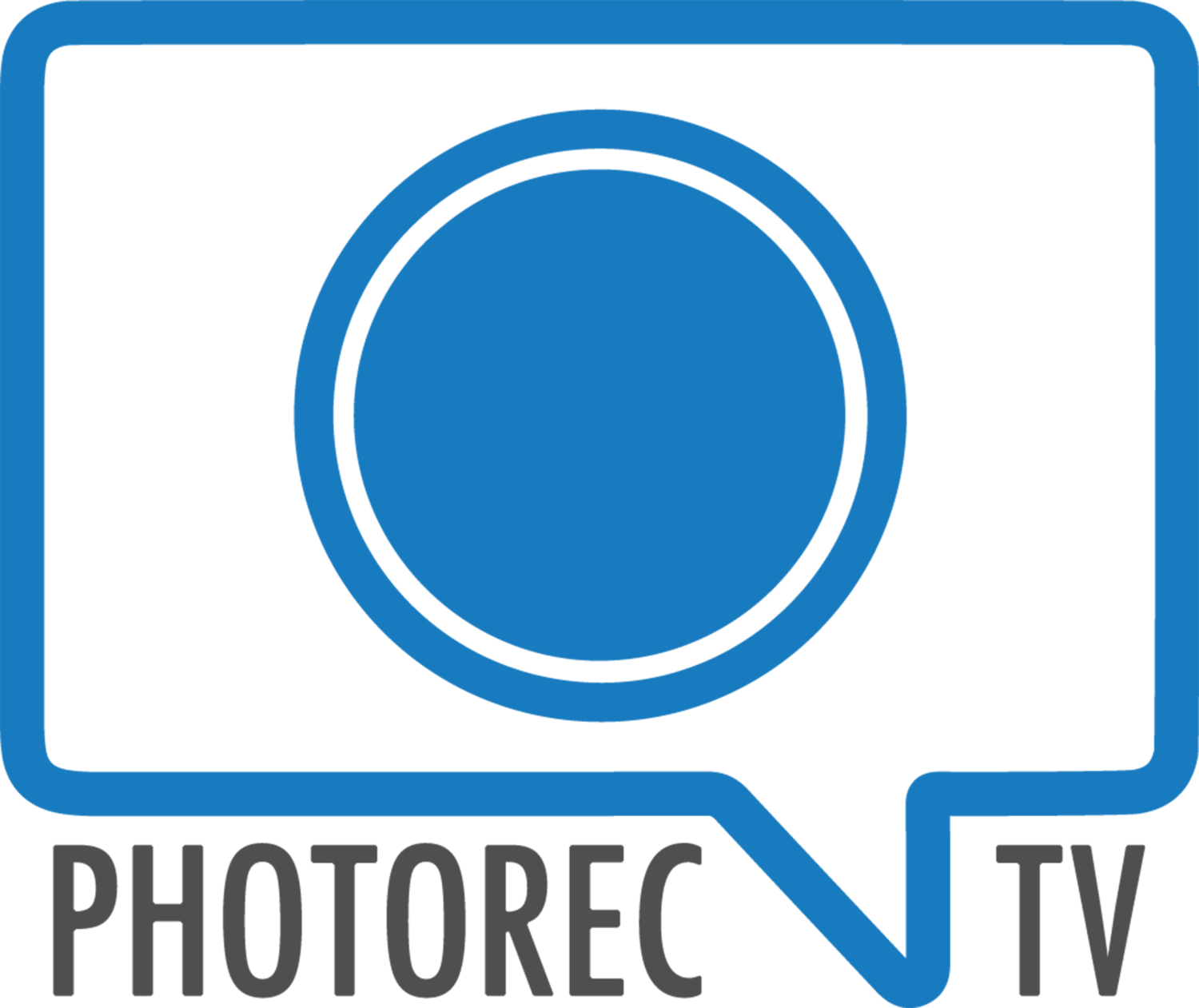Shutter Speed Explained Simply
/https://youtu.be/LER6RFkkj68Everything you need to know about Shutter Speed | The basics of Shutter Speed Explained. The importance of shutter speed in the exposure triangle, making sure you shoot fast enough to get sharp pictures, and how to use it creatively with techniques like panning to improve your photography. Crop factor calculator
Hands-on REVIEW Venus Optics Laowa 12mm f/2.8 Zero-D Lens
/Tamron 150-600 G2 Review and VS Sigma 150-600 C Lens comparison
/I spend a month shooting with the Tamron 150-600 G2 (THE NEWEST VERSION) and compare it against the Sigma 150-600 Contemporary. I have been very happy with the under $1,000 Sigma lens - it performed very well on my Serengeti safari trip last year. But for just $400 more the $1400 Tamron SP 150-600mm f/5-6.3 Di VC USD G2 offers weather sealing, a few sweet features and slightly better image quality - how much is it worth to you?
Tamron 150-600 G2 Review and VS Sigma 150-600 C Lens comparison
Buy Sigma 150-600mm f/5-6.3 DG OS HSMBuy the Tamron SP 150-600mm f/5-6.3 Di VC USD G2Tamron 150-600 G2 Review and Sigma 150-600 C images for download and compare
| LENS | Tamron SP 150-600mm F5-6.3 Di VC USD G2 | Sigma 150-600mm F5-6.3 DG OS HSM | C | Sigma 150-600mm F5-6.3 DG OS HSM | S | Canon EF 100-400mm F4.5-5.6L IS II USM |
|---|---|---|---|---|
| COST | $1,400.00 | $989.00 | $1,999.00 | $1,999.00 |
| Aperture | F5–6.3 | F5–6.3 | F5–6.3 | F4.5–6.5 |
| Min Focus | 2.70 m (106.3″) | 2.80 m (110.24″) | 2.60 m (102.36″) | 0.98 m (38.58″) |
| Weight | 2010 g (4.43 lb) | 1950 g (4.3 lb) | 2860 g (6.31 lb) | 1570 g (3.46 lb) |
| Filter Size | 95mm | 95mm | 105mm | 77mm |
| Weather Sealing | YES | Gasket at mount, otherwise no | YES | YES |
| BUY | B&H Photo | B&H Photo | B&H Photo | B&H Photo |
The features and slightly sharper quality with better contrast make the NEW Tamron 150-600 G2 my pick for budget super zoom lens. The Sigma offers great quality at significant savings though the lack of true weather sealing may be an issue for some. My Serengeti safari was a month of extremely dusty conditions and I never saw any issues with the Sigma but it certainly gives me more peace of mind to be out photographing in all conditions with a lens that is truly sealed. The Sigma 150-600 Sport offers that weather sealing and is sharper than the Contemporary version but the weight is ridiculous! And finally you sacrifice range with the 100-400 but gain a much more travel friendly lens that you could throw on a 1.4x converter and get great results. Related Video - Tamron 150-600, the Sigma 150-600, Canon's new 100-400, the Canon 400mm prime and even a 70-200 with a 2x extender
HACK: Sharing Panoramas on Instagram
/I have a quick hack for using the new instagram multi image feature to actually just share ONE giant panorama. Scroll down for video on how-to share a giant Panorama on Instagram.
Here is the Panorama I want to share
Posting it to Instagram results in this VERY limited view
But with this trick you can share the WHOLE image in a big, Panorific way
WATCH
How to Shoot and Edit Panorama Photos
https://www.youtube.com/watch?v=l1eUgdWinq0
Reasons to buy the 80D over the 77D
/All the Reasons Why you Should get the 80D instead of the 77D (80D vs 77D)https://www.youtube.com/watch?v=dG935usQTy0
BODY
- The 80D is a larger camera that feels nicer in hand for most people and balances better with some longer lenses
- Bigger battery, almost a 1,000 shots per charge - almost double what you get with the 77D
- 80D offers a pentaprism viewfinder vs the 77Ds pentamirror this means a bigger brighter view of the world, especially helpful in shooting in lower light.
- 80D offers larger rear dial, slots to assign custom settings on the mode dial and a dedicated AF-On button
- 80D has a headphone jack
- 80D is weather sealed.
FUNCTIONS
- 80D offers a faster top shutter speed of 1/8000 of a second vs 1/4000 on the 77D - This isn’t about photographing hummingbirds - this is about being able to shoot with fast prime lens outside - being able to go above 1/4000 makes it easier. Will you need this? Do you plan to do portraiture with fast primes outside?
- On the 80D You can also adjust ISO at 1/3 increments vs 1/2 stops on the 77D
- 80D offers Micro Adjust autofocus - this allows you to calibrate your camera to the lenses you are shooting with to get the most accurate focus and sharpest images
- 80D shoots +7 fps vs 6fps in the 77D - it’s a small distinction but one that could make the difference in catching the perfect moment when shooting faster action like sports.
To be fair there are a few reasons you may want to buy the 77D
- 77D(9000D) comes in a smaller, lighter body that you can purchase at a cheaper price
- 77D(9000D) offers an updated interface that beginners might find useful
- 77D(9000D) offers electronic stabilization for video - honestly I am not terribly excited about this method of stabilization it is just OK and certainly doesn’t smooth out larger movements like the stabilization offered by Sony, Olympus and Panasonic AND only works during video.
| Spec | Canon 80D | Canon 77D (9000D) |
| MP | 24 | 24 |
| ISO | 100-16,000 | 100-25600 (expands to 51200) |
| Processor | Digic 6 | Digic 7 |
| Number of AF pts | 45 (all cross type) | 45 (all cross type) |
| Viewfinder | 100% pentaprism | 95% pentamirror |
| Live View AF speed | Excellent | Excellent |
| Top Shutter Speed | 1/8000 | 1/4000 |
| Flash Sync Speed | 1/250 | 1/200 |
| FPS | 7 (live view 5 with AF) | 6 |
| Low Light focusing | -3 EV (very good) | -3 EV (very good) |
| Video | 1080p60 | 1080p60 |
| Headphone Jack | Yes | No |
| Mic Jack | Yes | Yes |
| Connectivity | WIFI/NFC | WIFI/NFC/Bluetooth |
| Battery Life | 960 shots | 600 shots |
| Weight | 730g (1.61 lb / 25.75 oz) | 540 g (1.19 lb / 19.05 oz) |
| Current Price | $1499 with 18-135 | $1099 Body | $1499 with 18-135 | $899 Body |
Buy the Canon 80D from B&H Photo
Buy the Canon 77D from B&H Photo
80D |
 |
77D |
 |
M6 |
|
|---|---|
 |
 |
18-55mm F/4-5.6IS STM lens |
 |
BR-E1 WirelessRemote Control |
 |
Sony FE 85mm f/1.4 GM Lens REVIEW vs Sigma 85mm ART
/For the past three weeks I have been shooting with the Sony FE 85mm f/1.4 GM Lens. In this review I compare it to the Sigma 85mm ART which I also recent reviewed vs the Canon 85mm f/1.2L Lens.https://youtu.be/ebqeszg5mdwThe Sony 85mm f/1.4 GM lens is a $1,798.00 f/1.4 to f/16 lens with an 11-blade aperture design The Sigma 85mm f/1.4 ART is a $1,199.00 f/1.4 to f/16 lens with a 9-blade aperture design AND you need the MC-11 Adapter because they do not make it in FE mount which brings the total cost to $1448 though Sigma sells bundles that might bring the price down to $1400Support our work - buy via our links
- Buy the Sony FE 85mm f/1.8 - B&H Photo (no sales tax outside NY)
- Buy the Sigma 85mm f/1.4 ART- B&H Photo (no sales tax outside NY)
- Buy the MC-11 EF to FE Adapter - B&H Photo (no sales tax outside NY)
Sample FE 85mm f/1.4 G Master Sample Photos
[unitegallery Sony85FE]
Sample FE 85mm f/1.4 G Master vs Sigma f/1.4 ART Series (Full resolution RAW images for download below)



 Download Full Resolution RAWS to make your own comparisons
Download Full Resolution RAWS to make your own comparisons
Build Quality:
Both of these lenses are exceptionally well made though the Sony gives you aperture control on the ring with a click/de click switch along with a focus hold button that can be assigned eye-af as well as several other options. The Sony len is dust and moisture resistant and significantly lighter at 1.80 lb (820 g) with a front filter size of 77mm. The Sigma weighs 2.49 lbs not including the extra weight of the adapter and the front filter is a massive 86mm. Another lens you should consider in this focal range is the Zeiss Batis 85mm f/1.8 which weighs just 1 lbs and is noticeably smaller too - I have not personally tested this lens so cannot comment on how it compares but based on the reviews I have seen it too offers a sharp lens and costs less at $1199 no adapter needed. The Sony can be a little noisy to focus at times I don’t hear the same from the Sigma.
Focus:
I expected the native sony lens to blow away the Sigma using the adapter and while the Sony certainly is faster and offers all the additional AF modes like tracking and eye af it really isn’t a fast focusing lens and even with the adapter the sigma does quite well though it starts to slow and hesitate noticeably when you move the AF point near the edges.
Image quality:
After spending a few days shooting and comparing images I can say that I have an extremely hard time deciding if one lens is sharper - wide open at f/1.4 I find both to be exceptionally and sharp. The 11 bladed aperture might contribute to slightly smoother bokeh but the difference is slight. In some lighting scenarios the sigma produces a slightly warmer image. Overall though from center to edge from wide open to f/16 these are two fine lenses.
Summary:
While I’d like to save you a couple hundred I would recommend the Sony 85 for most users - it’s smaller/lighter, offers weather sealing and a few bells and whistles that make it a more versatile lens. The Sigma though is a fantastic value if you don’t mind bigger/heavier and the clunk of using the MC11 adapter. And finally I briefly mentioned it the Zeis batis 85mm f/1.8 which isn’t as fast but much smaller, lighter though it’s almost the same price as the Sigma.Support our work - buy via our links
- Buy the Sony FE 85mm f/1.8 - B&H Photo (no sales tax outside NY)
- Buy the Sigma 85mm f/1.4 ART- B&H Photo (no sales tax outside NY)
- Buy the MC-11 EF to FE Adapter - B&H Photo (no sales tax outside NY)
New Lenses from Sigma 100-400, 14mm f/1.8, 24-70 f/2.8, 135mm f/1.8
/Sigma has JUST ANNOUNCED four new ART series lenses. I am a huge fan of the ART series, see my recent 85mm ART review - these have been incredibly sharp lenses that offer excellent value and the four newly announced lenses really round out their collection. We do not have pricing information or confirmed availability yet though my contact at Sigma states late April, early May. Press Release info below (my thoughts in bold along with my guess on cost - this page will be updated as new information become available.
Which lens in the lineup are you most excited about?
Which new Sigma lens are you most excited about?
— Toby ☉ (@photorectoby) February 21, 2017
The Sigma 100-400mm 5-6.3 DG HSM OS Contemporary
 The Sigma 100-400mm 5-6.3 DG HSM OS Contemporary is a state-of-the-art telephoto zoom that brings a new level of portability and quality to the super telephoto market. Touting Sigma’s Optical Stabilizer (OS), the Sigma 100-400mm 5-6.3 Contemporary is highly compact and lightweight compared to similar products on this market. A push/pull zooming function and a new Hyper Sonic Motor (HSM) allow for a more responsive approach to photography while a 1:3.8 macro feature can be utilized from up close or from a further distance.Physical Specs -Weight 2.56 lb (1160 g)Diameter 86 mm (3.4″)Length 182 mm (7.18″)Sealing Yesfor comparison the new Canon 70-300 weighs 1.56 lb (708 g) and costs $550 and the Canon 100-400 MK II weighs 3.5 lb (1.59 kg) and costs $2000I expect this lens to be nearly as sharp as Canon's 100-400 Mark II which costs almost double the price. It does include weather sealing though I suspect it isn't at the same level as Canon's 100-400 Mark II and I notice an absence of a tripod color - something often desired in a longer lens as a way to give you a stable mounting point when using smaller cameras. I am confused by the push/pull designation - this lens looks like a typical rotate to zoom - maybe you can also push/pull but there isn't much to grab onto. Guess- around $1200
The Sigma 100-400mm 5-6.3 DG HSM OS Contemporary is a state-of-the-art telephoto zoom that brings a new level of portability and quality to the super telephoto market. Touting Sigma’s Optical Stabilizer (OS), the Sigma 100-400mm 5-6.3 Contemporary is highly compact and lightweight compared to similar products on this market. A push/pull zooming function and a new Hyper Sonic Motor (HSM) allow for a more responsive approach to photography while a 1:3.8 macro feature can be utilized from up close or from a further distance.Physical Specs -Weight 2.56 lb (1160 g)Diameter 86 mm (3.4″)Length 182 mm (7.18″)Sealing Yesfor comparison the new Canon 70-300 weighs 1.56 lb (708 g) and costs $550 and the Canon 100-400 MK II weighs 3.5 lb (1.59 kg) and costs $2000I expect this lens to be nearly as sharp as Canon's 100-400 Mark II which costs almost double the price. It does include weather sealing though I suspect it isn't at the same level as Canon's 100-400 Mark II and I notice an absence of a tripod color - something often desired in a longer lens as a way to give you a stable mounting point when using smaller cameras. I am confused by the push/pull designation - this lens looks like a typical rotate to zoom - maybe you can also push/pull but there isn't much to grab onto. Guess- around $1200
The Sigma 24-70mm 2.8 DG HSM OS Art
 The Sigma 24-70mm 2.8 DG HSM OS Art is a premium workhorse zoom lens designed for the latest high megapixel DSLRs. A constant aperture of 2.8 through the zoom range make this a highly versatile tool and a brand new Optical Stabilization (OS) system help compensate for camera shake. Though a common focal length, the Sigma 24-70mm Art brings a new level of usability and durability featuring a rugged metal barrel and an emphasis on image quality. Building off the experience from the 12-24mm Art, the aspherical elements used in the 24-70mm 2.8 OS Art undergo a highly precise level of polishing producing elements thicker in the center then on the edges. This process creates stunning image quality and beautiful circular bokeh.Canon does not have a stabilized 24-70 f/2.8 and I suspect this new ART lens will be as sharp as Canon's current 24-70 f/2.8 L and it offers stabilization and it will likely be cheaper. Downsides? I don't see any right now as long as this lens is up to the standard of Sigma's existing ART series line. It even has a slightly smaller front filter size 80mm vs 82mm in the Canon. On price I suspect somewhere around $1400 slightly more expensive than the Tamron version. I expect this ART to be much better than the Tamron.
The Sigma 24-70mm 2.8 DG HSM OS Art is a premium workhorse zoom lens designed for the latest high megapixel DSLRs. A constant aperture of 2.8 through the zoom range make this a highly versatile tool and a brand new Optical Stabilization (OS) system help compensate for camera shake. Though a common focal length, the Sigma 24-70mm Art brings a new level of usability and durability featuring a rugged metal barrel and an emphasis on image quality. Building off the experience from the 12-24mm Art, the aspherical elements used in the 24-70mm 2.8 OS Art undergo a highly precise level of polishing producing elements thicker in the center then on the edges. This process creates stunning image quality and beautiful circular bokeh.Canon does not have a stabilized 24-70 f/2.8 and I suspect this new ART lens will be as sharp as Canon's current 24-70 f/2.8 L and it offers stabilization and it will likely be cheaper. Downsides? I don't see any right now as long as this lens is up to the standard of Sigma's existing ART series line. It even has a slightly smaller front filter size 80mm vs 82mm in the Canon. On price I suspect somewhere around $1400 slightly more expensive than the Tamron version. I expect this ART to be much better than the Tamron.
The Sigma 135mm 1.8 DG HSM Art
 The Sigma 135mm 1.8 DG HSM Art is a medium telephoto prime lens designed for modern high megapixel DSLRs. A new large Hyper Sonic Motor produces significant torque to the focusing group for better speed while the acceleration sensor detects the position of the lens and compensates for such factors as gravity to help aid in focusing performance. This state-of-the-art prime lens touts a dust and splash proof construction for guaranteed performance in any condition and its large 1.8 Fstop allows for more creative control over imagery. A stunning compression effect make the Sigma 135m 1.8 Art the ideal portrait lens while its large aperture help with event photography and much more.This seems very similar in size and weight to the 85mm that I have recently tested and found to be excellent. At 135mm you can get some incredible background separation from your subject. I will be interested to see how this compares to Nikon AF-S NIKKOR 105mm f/1.4E lens that is a little lighter and smaller but at $2100.00 likely a good bit more expensive. For wedding work I love primes at 85mm and below - above that and you may find yourself needing to move more than you want or are easily able to do in some situations BUT for portrait photographers these longer primes can offer stunningly beautiful shots. Price Guess $1200
The Sigma 135mm 1.8 DG HSM Art is a medium telephoto prime lens designed for modern high megapixel DSLRs. A new large Hyper Sonic Motor produces significant torque to the focusing group for better speed while the acceleration sensor detects the position of the lens and compensates for such factors as gravity to help aid in focusing performance. This state-of-the-art prime lens touts a dust and splash proof construction for guaranteed performance in any condition and its large 1.8 Fstop allows for more creative control over imagery. A stunning compression effect make the Sigma 135m 1.8 Art the ideal portrait lens while its large aperture help with event photography and much more.This seems very similar in size and weight to the 85mm that I have recently tested and found to be excellent. At 135mm you can get some incredible background separation from your subject. I will be interested to see how this compares to Nikon AF-S NIKKOR 105mm f/1.4E lens that is a little lighter and smaller but at $2100.00 likely a good bit more expensive. For wedding work I love primes at 85mm and below - above that and you may find yourself needing to move more than you want or are easily able to do in some situations BUT for portrait photographers these longer primes can offer stunningly beautiful shots. Price Guess $1200
The Sigma 14mm 1.8 DG HSM Art
 The Sigma 14mm 1.8 DG HSM Art is the world's first 1.8 prime lens at the 14mm focal length. This fast wide prime features the same large aspherical element touted in the Sigma 12-24mm F4 Art to control distortion and create stunning imagery. An updated Hyper Sonic Motor (HSM) provides fast and accurate autofocus while 3 Premium FLD and 4 SLD glass elements control chromatic aberration and sagittal comma flare. Building on the highly reputable Art line, the Sigma 14mm 1.8 DG HSM Art is designed to resolve the latest high megapixel DSLR sensors.This lens is an astrophotographers dream! That is of course hoping it is at the level of their other ART series lenses and minimizes distortion. To have a full frame lens as fast as f/1.8 gives you some awesome flexibility when shooting the night sky. Also useful for low light receptions and documentary work. Guess - $1100.00
The Sigma 14mm 1.8 DG HSM Art is the world's first 1.8 prime lens at the 14mm focal length. This fast wide prime features the same large aspherical element touted in the Sigma 12-24mm F4 Art to control distortion and create stunning imagery. An updated Hyper Sonic Motor (HSM) provides fast and accurate autofocus while 3 Premium FLD and 4 SLD glass elements control chromatic aberration and sagittal comma flare. Building on the highly reputable Art line, the Sigma 14mm 1.8 DG HSM Art is designed to resolve the latest high megapixel DSLR sensors.This lens is an astrophotographers dream! That is of course hoping it is at the level of their other ART series lenses and minimizes distortion. To have a full frame lens as fast as f/1.8 gives you some awesome flexibility when shooting the night sky. Also useful for low light receptions and documentary work. Guess - $1100.00
Canon T7i (800D) vs 77D (9000D)
/ A new year and new Canons to match with the newly announced Canon T7i (800D) and 77D (9000D). Odd's are you're wondering a bit where the 77D fits in, both Toby and I have been asked a lot this week. On paper, it's a replacement to the T6S as a bridge camera between the entry level T7i and 80D. While making the product line and obscure Canon naming just slightly harder it makes things a bit more drawn out with the bare bones budget T6, the new entry level T7i for beginners, the 77D making a step up with video, then going to the 80D as a truly semi-pro platform.
A new year and new Canons to match with the newly announced Canon T7i (800D) and 77D (9000D). Odd's are you're wondering a bit where the 77D fits in, both Toby and I have been asked a lot this week. On paper, it's a replacement to the T6S as a bridge camera between the entry level T7i and 80D. While making the product line and obscure Canon naming just slightly harder it makes things a bit more drawn out with the bare bones budget T6, the new entry level T7i for beginners, the 77D making a step up with video, then going to the 80D as a truly semi-pro platform.
What's New?
While not a massive update we do get a few new tricks in these models as nice improvements brought down from the higher end models. While that might not sound impressive what is on the menu will make for a notable improvement. Maybe not enough to jump only one generation but if your camera is getting a little long in the tooth, such as a T4i, there is a good bit to be gained by an upgrade to say the 77D.Upgrades and New Features
- Going with the biggest improvement first, !!!DUAL PIXEL AF!!! for both cameras. Brought down from the higher tier cameras this allows for smoother autofocus during live view
- Improved low light focusing, and a faster lock on time using 45 cross-type AF points. Upgraded from 19 to 45 AF points is a serious boost in performance!
- Digic 7 processors which should provide slightly better low light/high ISO performance
- Bluetooth along with Wifi and NFC and also remote control using the BR-E1 Remote
- Video time-lapse mode
- And this is all in a slightly smaller, slightly lighter, camera bodies
https://youtu.be/bpERpJG7VDY
What's Different?
In the T7i (800D) you get the basics and just that, while in the 77D (9000D) you get body improvements in line with the higher end cameras for a more professional and easier manual control. So what is different? Like the T6i/T6s cameras, the difference is mostly in the body with the 77D offering a very slightly larger body that offers a top LCD screen, a rear dial, lock switch and an eye sensor used to turn off the LCD when you bring your eye up to the viewfinder. When shooting side to side there is no difference in photo or video quality.
The Canon 77D (9000D) offers the same performance and sensor as the T7i (800D)
T7i
- Saves you some money that you could use to buy the 50mm f/1.8 STM lens
- 8 grams lighter - can you feel that difference? I doubt it!
77D
- Top LCD screen
- Rear Dial
- Lock Switch
- Eye Sensor
- AI Focus
- 5-axis digital image stabilization during video
Specifications
Photo Comparison
 |
||
 |
||
 |
||
 |
||
 |
Sample Images
Just Announced! Canon Rebel T7i (800D), 77D (9000D), M6, and 18-55mm IS STM Kit Lens
/Canon has announced new DSLRS - with Dual Pixel AF
 https://www.youtube.com/watch?v=bpERpJG7VDYAnd an updated mirrorless camera! SO Canon just announced - a Canon T7i (800D), a 77D (9000D) and the M6 (mirrorless camera) - If you are trying to figure out where the new 77D fits in the line up you are not alone - I have had a handful of confused readers write in over the last week, based on our post about the leaked specs, asking what the Canon 77D offers vs the Canon 80D. I have a quick comparison below but briefly the 77D is the successor to the T6s and the T7i is the successor to the Canon T6i. Canon will continue to offer the T6i making their line of Rebels quite large with a T5, T6, Sl1, T5i, T6i, T6s, T7i, 70D, 77D, 80D ALL still being offered/sold.. That's quite the lineup. The big headline - DUAL PIXEL AF is in the new cameras!! That is the fast and smooth AF during live view - immensely helpful for video and makes using live view a much more pleasant experience. Additionally Canon has shrunk the T7i a bit more, this makes me think we will not see a SL2 anytime soon.A quick comparison of the two new DSLRS the T7i and the 77D with the older T6i/T6s and the 80D. below the chart I have a few more differences between the 77D and the T7i and some recommendations about which you might want to buy.
https://www.youtube.com/watch?v=bpERpJG7VDYAnd an updated mirrorless camera! SO Canon just announced - a Canon T7i (800D), a 77D (9000D) and the M6 (mirrorless camera) - If you are trying to figure out where the new 77D fits in the line up you are not alone - I have had a handful of confused readers write in over the last week, based on our post about the leaked specs, asking what the Canon 77D offers vs the Canon 80D. I have a quick comparison below but briefly the 77D is the successor to the T6s and the T7i is the successor to the Canon T6i. Canon will continue to offer the T6i making their line of Rebels quite large with a T5, T6, Sl1, T5i, T6i, T6s, T7i, 70D, 77D, 80D ALL still being offered/sold.. That's quite the lineup. The big headline - DUAL PIXEL AF is in the new cameras!! That is the fast and smooth AF during live view - immensely helpful for video and makes using live view a much more pleasant experience. Additionally Canon has shrunk the T7i a bit more, this makes me think we will not see a SL2 anytime soon.A quick comparison of the two new DSLRS the T7i and the 77D with the older T6i/T6s and the 80D. below the chart I have a few more differences between the 77D and the T7i and some recommendations about which you might want to buy.
| Spec | Canon 80D | Canon T6s/T6i (750/760D) | Canon T7i (800D) | Canon 77D (9000D) |
| MP | 24 | 24 | 24 | 24 |
| ISO | 100-16,000 | 100-12,800 | 100-25600 (expands to 51200) | 100-25600 (expands to 51200) |
| Processor | Digic 6 | Digic 6 | Digic 7 | Digic 7 |
| Number of AF pts | 45 (all cross type) | 19(all cross type) | 45 (all cross type) | 45 (all cross type) |
| Viewfinder | 100% pentaprism | 95% pentamirror | 95% pentamirror | 95% pentamirror |
| Live View AF speed | Excellent | Good | Excellent | Excellent |
| Top Shutter Speed | 1/8000 | 1/4000 | 1/4000 | 1/4000 |
| Flash Sync Speed | 1/250 | 1/200 | 1/200 | 1/200 |
| FPS | 7 (live view 5 with AF) | 5 (live ~1 with AF) | 6 | 6 |
| Low Light focusing | -3 EV (very good) | -0.5 (ok) | -3 EV (very good) | -3 EV (very good) |
| Video | 1080p60 | 1080p30 | 1080p60 | 1080p60 |
| Headphone Jack | Yes | No | No | No |
| Mic Jack | Yes | Yes | Yes | Yes |
| Connectivity | WIFI/NFC | WIFI/NFC | WIFI/NFC/Bluetooth | WIFI/NFC/Bluetooth |
| Battery Life | 960 shots | 440 shots | 600 Shots | 600 shots |
| Weight | 730g (1.61 lb / 25.75 oz) | 565 g (1.25 lb / 19.93 oz) | 532 g (1.17 lb / 18.77 oz) | 540 g (1.19 lb / 19.05 oz) |
| Current Price | $1499 with 18-135 | $1099 Body | $1049 T6s with 18-135 | $849 Body | $1299 with 18-135 |$749 Body | $1499 with 18-135 | $899 Body |
What's new?
The T7i/77D now offer Dual Pixel AF, much improved low light AF performance and 45 cross-type AF points, Digic 7 processors which should provide slightly better low light/high ISO performance, Bluetooth and a new battery providing better battery life over the T6s/T6i models. And a video time-lapse mode. And this is all in a slightly smaller, slightly lighter body.
The Canon 77D offers the same performance and sensor as the T7i
So what is different? Like the T6i/T6s cameras the difference is mostly in the body with the 77D offering a very slightly larger body that offers a top LCD screen, a rear dial, lock switch and an eye sensor used to turn off the LCD when you bring your eye up to the viewfinder. They both use the same NEW battery. Canon 77D(left) vs Canon T7i(right) top view
Canon 77D(left) vs Canon T7i(right) top view
Canon T7i (800D) vs Canon 77D (9000D)
This is easy - If you are considering these cameras I expect you want to shoot manually and the 77D with the rear dial and top LCD screen make this a more manual friendly camera. I talk more about this in my T6s review If you are on a strict budget the T7i saves you some money that you could use to buy the 50mm f/1.8 STM lens
Canon 77D vs 80D
This is a tougher decision. The real strengths of the 80D - bigger battery providing almost 1,000 shots per charge, weather sealing and a significantly faster top shutter speed at 1/8000 of a second along with a headphone jack make this a more professionally capable camera for photographers and videographers. If you are a casual photographer the 77D offers savings and a camera the will provide more than enough power for you. If you plan to become more serious about your photography or videography the 80D offers just that much more room to grow that I do recommend purchasing.
About that Mirrorless Camera the M6
it is NOT replacing the M5, this will be an additional model alongside the M5. The improvement between the two will be the M6 includes stabilization for video and they have removed the EVF - providing an optional EVF you can attach in the hotshoe. This makes the camera a little more compact but in my opinion a lot less desirable. I want an EVF on ALL my cameras - otherwise bright sunny conditions make it very hard to see what's happening on the back of the LCD. (more soon)
Other interesting bits-
These new cameras now offer Bluetooth LE for additional connectivity options and Canon is releasing a Bluetooth wireless remote. The BR-E1, price $50, is capable of triggering the camera up to 16 feet. It can also control that lens zoom, PZ-E1, that was released with the 80D.
T7i |
 |
77D |
 |
M6 |
|
|---|---|
 |
 |
18-55mm F/4-5.6IS STM lens |
 |
BR-E1 WirelessRemote Control |
 |
DIY Heart Shaped Bokeh How to for Valentine's Day
/ Shape bokeh is a fun way to add a creative flare to your DSLR photography. You can create shape bokeh with any DSLR camera and prime lens. Many photographers use a 50mm lens for shape bokeh photography (which is what I used for this post), but don't feel limited this option.For the upcoming Valentine's Day, I'm sharing DIY heart shaped bokeh! The first step is to create a heart bokeh filter for your prime lens. Trace the lens you're going to use on black construction paper or card stock. Cut out the circle. Punch or cut out a heart in the center of the circle. If you're using a paper punch, you may need to fold the edge of the circle to center the punch.I cut the circle small enough that I can fit it right on the lens as you see pictured below. I have always used this method for shape bokeh with no problems. Some photographers create a paper cylinder or paper handles to attach to the bokeh filter, which works well, too.
Shape bokeh is a fun way to add a creative flare to your DSLR photography. You can create shape bokeh with any DSLR camera and prime lens. Many photographers use a 50mm lens for shape bokeh photography (which is what I used for this post), but don't feel limited this option.For the upcoming Valentine's Day, I'm sharing DIY heart shaped bokeh! The first step is to create a heart bokeh filter for your prime lens. Trace the lens you're going to use on black construction paper or card stock. Cut out the circle. Punch or cut out a heart in the center of the circle. If you're using a paper punch, you may need to fold the edge of the circle to center the punch.I cut the circle small enough that I can fit it right on the lens as you see pictured below. I have always used this method for shape bokeh with no problems. Some photographers create a paper cylinder or paper handles to attach to the bokeh filter, which works well, too. The second step is to gather your supplies. In addition to the heart filter, you'll need Christmas lights or another light source that will create bokeh. You'll also need a light source for your subjects. The ambient room lighting may work just fine. A speedlite works well, too. I have a couple of DIY Lowel EGO lights I use for blog shoots, which were perfect for lighting my subjects. I use daylight bulbs in my Lowel lights. White light is great for many artificial lighting setups, but it was a little harsh for this shoot. So I kept a regular lamp on as well to bring a little warm yellow light to my images.You don't need a dark background to create shape bokeh, but I found it helpful for creating a clean background for my DIY heart shaped bokeh background Valentine's shots. I wrapped my Christmas lights around a piece of black foam board with a chalked finish, which I keep around for blog shoots, and placed my subjects on black card stock. Finally, you'll need a few subjects! I encourage you to start with objects you have on hand at home to get comfortable with your setup and lighting. I've included a list of supplies I used that you may not already have on hand at the end of this post.The third step is to set up your shooting area. You need to allow some distance between your subject and the Christmas lights or other light source so you can create bokeh. I put a little over 5 feet (1.5 m) between my subject and lights. You may need to adjust your distance slightly, depending on your given subject and the exact effect you're trying to achieve. It may also take some trial and error to determine the best placement for your subjects and lighting.
The second step is to gather your supplies. In addition to the heart filter, you'll need Christmas lights or another light source that will create bokeh. You'll also need a light source for your subjects. The ambient room lighting may work just fine. A speedlite works well, too. I have a couple of DIY Lowel EGO lights I use for blog shoots, which were perfect for lighting my subjects. I use daylight bulbs in my Lowel lights. White light is great for many artificial lighting setups, but it was a little harsh for this shoot. So I kept a regular lamp on as well to bring a little warm yellow light to my images.You don't need a dark background to create shape bokeh, but I found it helpful for creating a clean background for my DIY heart shaped bokeh background Valentine's shots. I wrapped my Christmas lights around a piece of black foam board with a chalked finish, which I keep around for blog shoots, and placed my subjects on black card stock. Finally, you'll need a few subjects! I encourage you to start with objects you have on hand at home to get comfortable with your setup and lighting. I've included a list of supplies I used that you may not already have on hand at the end of this post.The third step is to set up your shooting area. You need to allow some distance between your subject and the Christmas lights or other light source so you can create bokeh. I put a little over 5 feet (1.5 m) between my subject and lights. You may need to adjust your distance slightly, depending on your given subject and the exact effect you're trying to achieve. It may also take some trial and error to determine the best placement for your subjects and lighting.
 The fourth step is to dial in your camera settings. Switch your DSLR camera to manual mode. Open your aperture as wide as possible. I shot with a 50mm f/1.8 lens, so I set my aperture to 1.8. Then I set my shutter speed to 1/80. The subject lighting source you use will determine the best ISO for the particular shot. I used a few different lighting setups, so my ISO is not the same for every shot. In some instances, it's as low as 200 while for other shots, I dialed it up to 400 or 800.Attach your homemade heart bokeh filter to your prime lens. Keep in mind when you shoot in portrait orientation, you'll have to rotate your heart filter accordingly. Otherwise, the hearts will be sideways!You're ready to start creating heart bokeh! I recommend trying a few shots of the bokeh alone to get comfortable with your camera settings. Heart bokeh is beautiful on its own. You may create some photos of it that you really love. Try switching your lens to manual focus and experiment with creating hearts in different sizes.
The fourth step is to dial in your camera settings. Switch your DSLR camera to manual mode. Open your aperture as wide as possible. I shot with a 50mm f/1.8 lens, so I set my aperture to 1.8. Then I set my shutter speed to 1/80. The subject lighting source you use will determine the best ISO for the particular shot. I used a few different lighting setups, so my ISO is not the same for every shot. In some instances, it's as low as 200 while for other shots, I dialed it up to 400 or 800.Attach your homemade heart bokeh filter to your prime lens. Keep in mind when you shoot in portrait orientation, you'll have to rotate your heart filter accordingly. Otherwise, the hearts will be sideways!You're ready to start creating heart bokeh! I recommend trying a few shots of the bokeh alone to get comfortable with your camera settings. Heart bokeh is beautiful on its own. You may create some photos of it that you really love. Try switching your lens to manual focus and experiment with creating hearts in different sizes.
 One popular bokeh background technique is to make is look as though the bokeh is coming right out of a glass, jar, or vase. You'll have to position your lights carefully, so the hearts match up with the glass or jar. You can edit a few stray hearts out of the background, but the more you do to position the lights properly, the less editing you'll have to do.I started with a heart mug because it seemed fitting to have the hearts coming out of a heart mug for Valentine's Day.
One popular bokeh background technique is to make is look as though the bokeh is coming right out of a glass, jar, or vase. You'll have to position your lights carefully, so the hearts match up with the glass or jar. You can edit a few stray hearts out of the background, but the more you do to position the lights properly, the less editing you'll have to do.I started with a heart mug because it seemed fitting to have the hearts coming out of a heart mug for Valentine's Day. A clear glass or vase also works well because it looks like the hearts are right in the glass. In this first shot, I used a clear stemless wine glass.
A clear glass or vase also works well because it looks like the hearts are right in the glass. In this first shot, I used a clear stemless wine glass. I absolutely love colored glass and have a number of colored Ball jars and other glass pieces around my house. I used a blue Ball jar for a few shots because I love pairing turquoise and red. Green or purple glass would be so pretty, too.
I absolutely love colored glass and have a number of colored Ball jars and other glass pieces around my house. I used a blue Ball jar for a few shots because I love pairing turquoise and red. Green or purple glass would be so pretty, too. I added a string of fairy lights to the Ball jar to bring a little more light into the shot and get some hearts right in the jar. I purposely made this shot a little fuzzy to get the fairy light hearts to pop and to heighten the whimsical aesthetic.
I added a string of fairy lights to the Ball jar to bring a little more light into the shot and get some hearts right in the jar. I purposely made this shot a little fuzzy to get the fairy light hearts to pop and to heighten the whimsical aesthetic. Playing around with my blue Ball jar was so much fun I decided to create a shot with it with a regular red bokeh background. The fun of a bokeh setup is that there are so many possibilities. If you have an idea for a shot, give it a try!
Playing around with my blue Ball jar was so much fun I decided to create a shot with it with a regular red bokeh background. The fun of a bokeh setup is that there are so many possibilities. If you have an idea for a shot, give it a try! I've seen a few similar images to the book image I've shared below and was excited to try this technique myself. I switched up the red Christmas lights for a pastel strand. I tried shooting with a few different books and liked the results best with a larger book because you can see more bokeh IN the heart. Larger pages also make it easier to get some color on the top interior of the hearts, as you see below. My favorite shot worked best as a square crop, but a wider landscape composition is perfect for a heart book shot as well.You may need to tape your pages into place, particularly if you use a book with glossy pages like I did. Painter's tape is ideal because it's less likely to damage the pages than something like packing tape. I would still remove the tape (carefully!) as soon as you're finished with your photography.
I've seen a few similar images to the book image I've shared below and was excited to try this technique myself. I switched up the red Christmas lights for a pastel strand. I tried shooting with a few different books and liked the results best with a larger book because you can see more bokeh IN the heart. Larger pages also make it easier to get some color on the top interior of the hearts, as you see below. My favorite shot worked best as a square crop, but a wider landscape composition is perfect for a heart book shot as well.You may need to tape your pages into place, particularly if you use a book with glossy pages like I did. Painter's tape is ideal because it's less likely to damage the pages than something like packing tape. I would still remove the tape (carefully!) as soon as you're finished with your photography. Over the last couple months, I've bought a few new items for photography shoots, including a set of Scrabble letters. I create a lot of styled shoots for different seasons and holidays for my blog and know that I'm going to use these little letters a lot. I wrapped a red lights strand and a clear lights strand around my black foam core board for this shot.
Over the last couple months, I've bought a few new items for photography shoots, including a set of Scrabble letters. I create a lot of styled shoots for different seasons and holidays for my blog and know that I'm going to use these little letters a lot. I wrapped a red lights strand and a clear lights strand around my black foam core board for this shot. Finally, I created a little wedding setup with a couple Playmobile figures. My husband and I used this set for our wedding cake topper, so I'm a little biased in my preference for this shot. BUT I'm really happy with the overall composition and the lighting on the figures.
Finally, I created a little wedding setup with a couple Playmobile figures. My husband and I used this set for our wedding cake topper, so I'm a little biased in my preference for this shot. BUT I'm really happy with the overall composition and the lighting on the figures. Again, a DIY heart shaped bokeh background is so versatile. It allows for endless fun possibilities for creative photography. I've included a couple more red non-heart bokeh background examples. The first one features the Canon FD 28mm f/2.8 lens, which I use with a Canon AE-1.
Again, a DIY heart shaped bokeh background is so versatile. It allows for endless fun possibilities for creative photography. I've included a couple more red non-heart bokeh background examples. The first one features the Canon FD 28mm f/2.8 lens, which I use with a Canon AE-1. The second one features one of my husband's Warhammer figures. You'll have to make up your own story as to why he's riding a tank with a red bokeh background behind him.
The second one features one of my husband's Warhammer figures. You'll have to make up your own story as to why he's riding a tank with a red bokeh background behind him.
DIY heart shaped bokeh supplies:
red Christmas lights | pastel Christmas lights | clear Christmas lights | fairy lights
stemless wine glass | blue Ball jars | Scrabble tiles
Sigma ART 85mm f/1.4 vs Canon 85mm f/1.2
/The New Sigma 85mm ART lens is SHARP
/I have been testing this lens on a Mckay Photography Academy trip this past week and have found it to be an exceptionally sharp lens! And it stays sharp wide open at f/1.4! Here are some sample shots with the 85mm f/1.4 at or near f/1.4. Click each to see large or scroll down to the dropbox link!Order your copy of the Sigma 85mm ART from B&H Photo $1,199.00Follow me on Instagram to see more images from this trip and the 85mm f/1.8


 Download/View images at 100% Size Order your copy of the Sigma 85mm ART from B&H Photo $1,199.00
Download/View images at 100% Size Order your copy of the Sigma 85mm ART from B&H Photo $1,199.00
WIN
/The giveaway has moved!
Please enter at https://photoenthusiastnetwork.com/giveaway
Make Photos EP #002 - Long Exposure Light Trails with Seattle Skyline
/I walk you through the capture and post processing in Lightroom of one a recent Instagram photo - Using a popular vantage point of the city of Seattle - Dr. Jose Rizal Park, a conveniently placed hole in the fence and a long exposure to get light trails creating this image - Follow me on Instagramhttps://youtu.be/fBofBxH8NiEGear used in this videoSony alpha a7r iiCanon 24-70 f/2.8 II LNisi Filters CPL (part of the kit)MeFoto Travel Tripod CFGear used to MAKE this videoPanasonic GH4Panasonic 12-35 f/2.8 Lens
Olympus OM-D EM-1 Mark II Review
/After two months of using the EM-1 Mark II including a weeklong trip in subzero temps in Alaska - I share my thoughts on this top of the line Micro 4/3rds camera - How well does it do at high ISOs, how good is the stabilization and more...https://youtu.be/SdKpor-nvDs Reviews like this are made possible by Photorec.tv members - want to have a detailed conversation with me about the pros and cons of the EM1 Mark II or another camera, want to figure out what is the best camera for you? Become a member todayBuy the Olympus EM1 Mark II from B&H Photo and support Photorec.tvLenses Used in Alaska/During Em1 Mark II Review
The Olympus 12-100 f/4 Provides 6.5 stops of IS when used with the EM1 Mark II
Full Resolution Images on DropBox
[gallery columns="4" td_select_gallery_slide="slide" ids="13425,13426,13427,13428,13429,13430,13431,13432"]The Olympus e-m1 Mark II camera some reviewers have chosen it as the camera of 2016 and a few weeks ago I wondered if it was going to be my perfect do-it-all camera! For the last month, almost 2 months now, I have used the Olympus as a do-it-all camera for photos and videos including a week long trip to Alaska in sub-freezing temperatures. In this review I will share what I love about this camera, what I don’t love, how it compares to a few competitors and whether or not it can work for me and replace two cameras I typically take on my travels - my Sony A7RII mostly for photos and the Panasonic GH4 - mostly used for video, vlogging and timelapses.Strengths of the Em1 Mark IIStabilization - I can get 2 to 3 second exposures HANDHELD with this camera and in 4K video that sensor stabilization plus electronic stabilization translates to extremely smooth footage. This camera is a joy to shoot handheld video with and in all the Alaska footage I shot I saw no signs of the annoying wobble you often get from electronic stabilization. Note that THE really serious stabilization, 6.5 stops, SYNC IS as Olympus calls it is achieved with their 12-100 f/4 lens which I have not tried.Swiss Army Tool
"best tool I can compare the EM1 Mark II to is one of those ridiculous Swiss army knifes, the really thick ones"
I have mentioned In the past that these cameras are tools to me and the best tool I can compare the EM1 Mark II to is one of those ridiculous Swiss army knifes, the really thick ones, the amount of features beyond the stabilization they have packed into this camera include ridiculously fast AF, 60 frames per second RAW when you half press the shutter button, 18 frames per second with autofocus tracking and silent shooting, hi res shooting, live bulb, live timer, live composite, 4k video, and built in time lapse! All of these features makes the EM1 Mark II an extremely flexible and versatile tool. And on top of the full feature set you have the freedom to FULLY customize this camera - you can even switch the on/off button to other functions! You will find yourself spending a good bit of time in the menu if you haven’t shot with Olympus more and I did experience several camera freeze ups after customizing until I reset the camera and went a little lighter on the customization.About that AF - I struggled to really get the C-AF and tracking to nail fast moving subjects - overall focus is VERY fast but this wouldn't be my first choice if I was primarily shooting wildlife or sports. In video C-AF was very good with face recognition/focus working reliably enough to use in most situations. Certainly a step up from the GH4 which cannot always be relied on to stay focused. Rugged BodyAll of this performance and features are contained in a portable and rugged body that I didn’t worry about using in the rain or in subzero temps - in fact I left this outside for several hours in 20 below zero fahrenheit - minus the battery and it continued to perform just fine. Battery life in normal temperatures is decent - if you have two batteries you should be able to get through a day of mixed photo and video just fine and the charger is quick charge which is really helpful. The dual card slots are nice and you have an excellent amount of flexibility in how you use those two cards - backup redundancy or photos to one and video to the other though only one is high speed and that might be the cause of some buffer issues I saw that I will address in a moment.Solid Image and Video Quality Below ISO 1600
Rugged BodyAll of this performance and features are contained in a portable and rugged body that I didn’t worry about using in the rain or in subzero temps - in fact I left this outside for several hours in 20 below zero fahrenheit - minus the battery and it continued to perform just fine. Battery life in normal temperatures is decent - if you have two batteries you should be able to get through a day of mixed photo and video just fine and the charger is quick charge which is really helpful. The dual card slots are nice and you have an excellent amount of flexibility in how you use those two cards - backup redundancy or photos to one and video to the other though only one is high speed and that might be the cause of some buffer issues I saw that I will address in a moment.Solid Image and Video Quality Below ISO 1600
 I was for the most part happy with the image and video quality - Excellent quality and great detail under ISO 1600 - above that things can get rough in some situations but a little noise reduction and I am still for the most part happy. If I look at some of my favorite images of 2016 - the vast majority were under ISO 1600 - which I mostly mention as a way for you to look back over your images to decide how important clean higher ISO is to your photography. One of the goals of the Alaska trip was capturing the northern lights photography and they are best shot at shorter exposures and higher ISOs and the Olympus didn’t handle that as well as the Sony with loads more shadow noise. I got useable shots but really appreciate the flexibility of the Sony when I need clean higher ISOs. Video quality is certainly good though the panasonic GH4 4k and 1080 video looks a little better to me in most situations but of course the Gh4 is not sensor stabilized for that we are waiting for the GH5 or as many of you mentioned in the comments of the Ditching Sony video - the G85 which at 1/2 the price looks as good if not slightly better for video. For photos the G85 doesn’t offer all the bells and whistles - certainly not as good at capturing fast action but generally on par and actually offers more lenses than Olympus with the DUAL IS! So a quick summary of the strengths of the olympus. This is a great all around camera that is fun to use, provides nicely stabilized video AND gives you a ton of bells and whistles along with good image and video quality but it does have a few issues- Low light performance. Over the last year I have mostly shot with the Sony a7R2 this is a full frame sensor and one of the best in its class in both resolution and detail so it is hard for ME to NOT compare what I have been used to seeing with what I get out of the Olympus but that isn’t a fair comparison so I looked at matching it up against APS-C sized sensor like the Sony a6300, a6500 the Nikon D500 and the Fuji XT2 - all of those cameras are definitely better in low light performance but the Olympus isn’t too far behind and it even beats the Canon 80D! Now again, the EM1 Mark II offers stabilization that gives you some flexibility with shooting slower shutter speed but vs everything above you are going to generaly find your photos noisier. The most fair comparison- pitting the EM1 Mark II against other Micro 4/3rd sensors on the market - it is the current king in low light performance. However figuring out the true value here is tricky - at two thousand dollars this is not a cheap camera and is more expensive than everything I just compared it too - So you then have to start deciding exactly how much it is worth to you to go smaller and lighter. And - About being lighter - as I start to price out lenses what I mentioned is already an expensive camera well it doesn’t get any cheaper with these nice lenses AND the weight savings start to vanish- though your bag can be smaller or you could choose to go with cheaper and smaller primes which is fun - but if you want the best lenses you will still be carrying a fair amount of weight and paying top dollar.Remember I am not only reviewing this camera but trying to figure out if it can work for my needs so I can carry less and I had major concerns about the Wifi control turns out you have enough control even if you have to be round about how you setup AF for video BUT there is still one issue for me- While using the remote you cannot shoot 4K video, only 1080P - I shoot in 4K, I plan to shoot in 4k in the future so why Olympus do you give me a 4k capable camera that suddenly becomes a 1080P camera if I want to use the remote? In researching this and complaining about it online someone pointed out that the Fuji XT-2 limits you to 720P when using wifi. SO Just a thank you to Panasonic for giving a 4K camera, the GH4, that always remains a 4K camera AND you don’t have to be round about to do auto focus with the app. Another small disappointment when you shoot a crazy burst you don’t get to review any of those images until they all finish writing to the sensor which can take some time with the larger bursts. SO in final summary - I really enjoyed using this camera, if you are looking for a top of the line Micro 4/3 camera well suited for wildlife photography, general travel photography including vlogging style video - this is the best you can BUY... BUT at its current cost there are some competitors that while they might not offer all the bells and whistles or all of the portability they do either outclass it in low light performance or resolution or both. And while I would love to simplify to one camera, one lens system I am just not willing to make this big a change in resolution or low light performance, especially when my GH4 still looks better for video even if it isn’t as stabilized. I will be looking at the Panasonic G85 and while I hope to review the Fuji XT-2 soon it isn’t in the running as a replacement despite many of you recommending it - the 720p during wifi remote use, the 10 minutes limit to 4k without the power grip AND the lack of fully articulating screen means it cannot be a do it all camera for me. Buy the Olympus EM1 Mark II from B&H Photo and support Photorec.tvLenses Used in Alaska/During Em1 Mark II Review
I was for the most part happy with the image and video quality - Excellent quality and great detail under ISO 1600 - above that things can get rough in some situations but a little noise reduction and I am still for the most part happy. If I look at some of my favorite images of 2016 - the vast majority were under ISO 1600 - which I mostly mention as a way for you to look back over your images to decide how important clean higher ISO is to your photography. One of the goals of the Alaska trip was capturing the northern lights photography and they are best shot at shorter exposures and higher ISOs and the Olympus didn’t handle that as well as the Sony with loads more shadow noise. I got useable shots but really appreciate the flexibility of the Sony when I need clean higher ISOs. Video quality is certainly good though the panasonic GH4 4k and 1080 video looks a little better to me in most situations but of course the Gh4 is not sensor stabilized for that we are waiting for the GH5 or as many of you mentioned in the comments of the Ditching Sony video - the G85 which at 1/2 the price looks as good if not slightly better for video. For photos the G85 doesn’t offer all the bells and whistles - certainly not as good at capturing fast action but generally on par and actually offers more lenses than Olympus with the DUAL IS! So a quick summary of the strengths of the olympus. This is a great all around camera that is fun to use, provides nicely stabilized video AND gives you a ton of bells and whistles along with good image and video quality but it does have a few issues- Low light performance. Over the last year I have mostly shot with the Sony a7R2 this is a full frame sensor and one of the best in its class in both resolution and detail so it is hard for ME to NOT compare what I have been used to seeing with what I get out of the Olympus but that isn’t a fair comparison so I looked at matching it up against APS-C sized sensor like the Sony a6300, a6500 the Nikon D500 and the Fuji XT2 - all of those cameras are definitely better in low light performance but the Olympus isn’t too far behind and it even beats the Canon 80D! Now again, the EM1 Mark II offers stabilization that gives you some flexibility with shooting slower shutter speed but vs everything above you are going to generaly find your photos noisier. The most fair comparison- pitting the EM1 Mark II against other Micro 4/3rd sensors on the market - it is the current king in low light performance. However figuring out the true value here is tricky - at two thousand dollars this is not a cheap camera and is more expensive than everything I just compared it too - So you then have to start deciding exactly how much it is worth to you to go smaller and lighter. And - About being lighter - as I start to price out lenses what I mentioned is already an expensive camera well it doesn’t get any cheaper with these nice lenses AND the weight savings start to vanish- though your bag can be smaller or you could choose to go with cheaper and smaller primes which is fun - but if you want the best lenses you will still be carrying a fair amount of weight and paying top dollar.Remember I am not only reviewing this camera but trying to figure out if it can work for my needs so I can carry less and I had major concerns about the Wifi control turns out you have enough control even if you have to be round about how you setup AF for video BUT there is still one issue for me- While using the remote you cannot shoot 4K video, only 1080P - I shoot in 4K, I plan to shoot in 4k in the future so why Olympus do you give me a 4k capable camera that suddenly becomes a 1080P camera if I want to use the remote? In researching this and complaining about it online someone pointed out that the Fuji XT-2 limits you to 720P when using wifi. SO Just a thank you to Panasonic for giving a 4K camera, the GH4, that always remains a 4K camera AND you don’t have to be round about to do auto focus with the app. Another small disappointment when you shoot a crazy burst you don’t get to review any of those images until they all finish writing to the sensor which can take some time with the larger bursts. SO in final summary - I really enjoyed using this camera, if you are looking for a top of the line Micro 4/3 camera well suited for wildlife photography, general travel photography including vlogging style video - this is the best you can BUY... BUT at its current cost there are some competitors that while they might not offer all the bells and whistles or all of the portability they do either outclass it in low light performance or resolution or both. And while I would love to simplify to one camera, one lens system I am just not willing to make this big a change in resolution or low light performance, especially when my GH4 still looks better for video even if it isn’t as stabilized. I will be looking at the Panasonic G85 and while I hope to review the Fuji XT-2 soon it isn’t in the running as a replacement despite many of you recommending it - the 720p during wifi remote use, the 10 minutes limit to 4k without the power grip AND the lack of fully articulating screen means it cannot be a do it all camera for me. Buy the Olympus EM1 Mark II from B&H Photo and support Photorec.tvLenses Used in Alaska/During Em1 Mark II Review
Reviews like this are made possible by Photorec.tv members - want to have a detailed conversation with me about the pros and cons of the EM1 Mark II or another camera, want to figure out what is the best camera for you? Become a member today
Make Data Driven Decisions!
/What lens should I buy next? That's the second most common question we see here at Photorec.tv. Can you guess the first most common question?Lightroom users I have two tools that can help you make sense of all your metadata and provide some insight as to how you shoot which you can use to make smart, data driven purchases that fit your way of shooting.
Method #1 - Lightroom Dashboard
Access at - https://www.lightroomdashboard.com/Easy drag and drop a backup of your LR catalog and the browser based tool returns a simple graphical display with plenty of information - what was your favorite ISO of 2016? I bet ISO 100.
Method #2 - Jeffrey’s “Data Plot” Lightroom Plugin
Access at http://regex.info/blog/lightroom-goodies/data-plotDownload and install Jeffrey's plugin (I show you how to install plugins in my Lightroom for Beginners)Once installed you can find the options under File > Plugin Extras jf Data Plot From there you have the option to view graphs and even create collections based on your data - want a collection of all your shots captured with prime lenses? It's possible.
Method #3 - Lightroom's Metadata Tools
No plugins, no drag and drop - just use the tools already built into Lightroom to make some sense of your data.In the Library Module(1) Grid View > Click Metadata(2) You can now add columns and change the data in the column simply by clicking on the header (3) Which method do you like best? Any surprises in your findings? What gear do you hope to add in 2017 to your camera bag?Have you ever had someone audibly lose their breath when they see one of your photos? It's an amazing feeling and I want to help you get there - Become a PRTV member Today!
You can now add columns and change the data in the column simply by clicking on the header (3) Which method do you like best? Any surprises in your findings? What gear do you hope to add in 2017 to your camera bag?Have you ever had someone audibly lose their breath when they see one of your photos? It's an amazing feeling and I want to help you get there - Become a PRTV member Today!
Panasonic GH5 fully Announced
/What you need to know: The Panasonic GH4 is a mirrorless camera that looks like a small DSLR. Capable of shooting photos and video the GH4 was one of the first truly affordable 4K capable cameras that provides a host of features professional videographers love. The GH5 shipping in late March 2017 offers some noteable improvements that look to continue to place it at the top of 4K capable cameras BUT the now more expensive $1999 price certainly provides room for competitors.
My Current Recommended cameras for primarily videoSerious video work - Panasonic GH4 / Sony a6300 or a6500Best vlogging camera - Panasonic G85Smallest 4k video capable I can recommend - Sony RX100 Mark IV
I own and use the Panasonic GH4 daily - it is the camera I use to shoot all of my videos including my travel vlogs (except the recent Alaska trip where I tried the Olympus EM1 Mark II) The GH4 shoots beautiful 4K video, has a battery that lasts for hours and hours of shooting and it's nicely portable with a fully articulating screen- I could go on but you are here because the successor to the GH4 has just been completely announced- I say completely because we had an official announcement from panasonic about the GH5 last September. That announcement wasn't complete with some information missing. We now have the complete picture.https://www.youtube.com/watch?v=JPxKZ2MWgdI
Panasonic GH5 Specs
- 20.3MP Four Thirds sensor with no low pass filter.
- 4K Video: Internal recording at 4K60/50p (4:2:0 8bit) & 4K30/25p/24p (4:2:2 10bit).
- Variable Video Frame Rates 4K: Max. 60fps & FHD: Max. 180fps.
- No additional crop factor when shooting 4K
- 5-Axis Photo/Video Dual I.S. 2.0 up to 5 stops with compatible LUMIX MFT lenses, plus in-body stabilization support for classic non-O.I.S lenses.
- Fast and accurate focusing utilizing LUMIX 480 fps DFD focusing system and Venus Engine 10
- Full size (Type A) HDMI terminal with cable lock included & twin SD Card slots (UHS-II U3 Compatible).
- 3.5mm mic & headphone terminals - optional DMW-XLR1 microphone adaptor.
- Eye viewfinder 3680k-dot OLED, 21mm, 0.76x.
- V-LogL recording with (Optional) DMW-SFU1 paid upgrade
Body style looks very similar to the GH4 with a few differences
- Dual SD Card Slots
- Full-sized HDMI port
- USB-C for data transfer
- Joystick button for focus point selection & menu navigation (You can also use the touch screen)
Additional firmware updates planned in April and later in 2017 will provide additional bit rates.Price $1,999 an increase over the GH4 and $600 more over the Sony a6500Pre Order the GH5 from B&H Photo
GH5 vs the a6500/a6300
Benefits of the GH5
- Better Battery Life
- 4k at 60FPS
- Better slow mo
- Higher bitrate files
- Fully articulated touchscreen
- Touchscreen works well for ALL camera options
- Large photo burst rate
- no overheating. We don't know for sure yet but the a6500 can in some warmer/hotter conditions shut down do to high internal temps.
- Better lens selection
- Stabilized sensor vs the a6300.
Benefits of Sony a6500
- Better low light performance
- Faster AF
- Better photos (greater resolution and cleaner high ISO)
- Cheaper and the a6300 is almost 1/2 the price.
The list certainly looks good for the GH5 but if you need better low light performance or want a more capable photo camera the a6500 or a6300 would probably be my pick. The GH5 wins in usability and offers that fully articulating screen if you need to vlog.Buy the a6500 from B&H Photo $1,398.00Buy the a6300 from B&H Photo $998.00Pre Order the GH5 from B&H Photo $1,999.00
Your Best Photo of 2016
/Click on Through to watch on Youtube in 4K https://youtu.be/c_FRpwo9vO4 Submission is closed - Finished video will be posted soon on Youtube - Make sure you are a subscriber to be notified. Click to subscribe and be notified. UPDATE - iOS devices ignore your file name when you upload and all I get is a IMAGE.JPEG filename. IF THE FILE IS NOT PROPERLY NAMED Yourfirstname_Lastname I will not use. Please upload from desktop or laptop to avoid this. I am collecting your best/favorite photo from 2016 for the 3rd annual slide show. Read ALL Directions and Disclaimers. Submit link below the video.Directions:
- Search your library for your favorite image you captured in 2016.
- 16:9 crop is preferred but not required. - This fits the video nicely but portrait/vertical orientation is acceptable and should NOT be 16:9 - a much wider aspect ratio would be preferred for vertical.
- You may watermark your image - I would prefer it not be obtrusive but it is your image.
- Export as a JPEG - longest side at least 4,000 pixels.
- Name the file your firstname_lastname and drop into the folder found at the link below. - If your image is not properly named it will not be used.
- Submit by MIDNIGHT PST December 30th.
Disclaimers:
- By submitting your image here you authorize photorec.tv to share your image in a slideshow on Youtube. Your image will not be used for anything else without your express permission.
- I will not return images - make sure you don't give me the ONLY copy.
- I am not responsible for copyright violations that occur on Youtube.
- I cannot guarantee that I will use your image
https://www.youtube.com/watch?v=6wrbJ5NVCAo
>> Submit here >> CLOSED for 2016. See you in 2017!!
Your Photos Suck - Tips for Sucking Less as a Photographer
/I have just a few quick tips to help you suck less as a photographer - or at the very least fool your friends into thinking you are improving greatly! This is a great video to share with your friends and family who post way too many photos on facebook. A couple of simple tips will get everybody taking better photos.https://youtu.be/ihaz1_xmxFk
Quick Tips to better photos
- Share only your best work - if you have three photos of a tree PICK ONE, the best one and only share that one image. I used Facebook in the video but if you upload to more than one photo to Instagram at the same time you are doing it WRONG.
- Post process your images- Nothing major requiring hours - just add a little clarity, make sure your horizon is straight - learn just how easily it is, you can even do it automatically on import!
- Be deliberate in your framing, leveling and timing(see tip 4) - I talk more about framing in my tips for photographing cities.
- Timing - don't just snap a photo and walk away - wait for the moment that frames people, objects nicely.
- Take time to learn the basics of your camera and understand aperture, shutter speed and ISO
Do you have additional simple tips for sucking less? Leave a comment on the video Thanks to Nick Sharples for helping me film Follow @nsharplesFilmed withPanasonic GH4 and 12-35 f/2.8 LensHandheld Shots with Crane gimbal










